You are here
Oracle中的instr()函数 详解及应用 有大用
星期三, 2021-09-08 08:20 — adminshiping1
1、instr()函数的格式 (俗称:字符查找函数)
格式一:instr( string1, string2 ) // instr(源字符串, 目标字符串)
格式二:instr( string1, string2 [, start_position [, nth_appearance ] ] ) // instr(源字符串, 目标字符串, 起始位置, 匹配序号)
解析:string2 的值要在string1中查找,是从start_position给出的数值(即:位置)开始在string1检索,检索第nth_appearance(几)次出现string2。
注:在Oracle/PLSQL中,instr函数返回要截取的字符串在源字符串中的位置。只检索一次,也就是说从字符的开始到字符的结尾就结束。
2、实例
格式一
1 select instr('helloworld','l') from dual; --返回结果:3 默认第一次出现“l”的位置 2 select instr('helloworld','lo') from dual; --返回结果:4 即“lo”同时出现,第一个字母“l”出现的位置 3 select instr('helloworld','wo') from dual; --返回结果:6 即“wo”同时出现,第一个字母“w”出现的位置
格式二
1 select instr('helloworld','l',2,2) from dual; --返回结果:4 也就是说:在"helloworld"的第2(e)号位置开始,查找第二次出现的“l”的位置 2 select instr('helloworld','l',3,2) from dual; --返回结果:4 也就是说:在"helloworld"的第3(l)号位置开始,查找第二次出现的“l”的位置 3 select instr('helloworld','l',4,2) from dual; --返回结果:9 也就是说:在"helloworld"的第4(l)号位置开始,查找第二次出现的“l”的位置 4 select instr('helloworld','l',-1,1) from dual; --返回结果:9 也就是说:在"helloworld"的倒数第1(d)号位置开始,往回查找第一次出现的“l”的位置 5 select instr('helloworld','l',-2,2) from dual; --返回结果:4 也就是说:在"helloworld"的倒数第2(l)号位置开始,往回查找第二次出现的“l”的位置 6 select instr('helloworld','l',2,3) from dual; --返回结果:9 也就是说:在"helloworld"的第2(e)号位置开始,查找第三次出现的“l”的位置 7 select instr('helloworld','l',-2,3) from dual; --返回结果:3 也就是说:在"helloworld"的倒数第2(l)号位置开始,往回查找第三次出现的“l”的位置
注:MySQL中的模糊查询 like 和 Oracle中的 instr() 函数有同样的查询效果; 如下所示:
MySQL: select * from tableName where name like '%helloworld%'; Oracle:select * from tableName where instr(name,'helloworld')>0; --这两条语句的效果是一样的
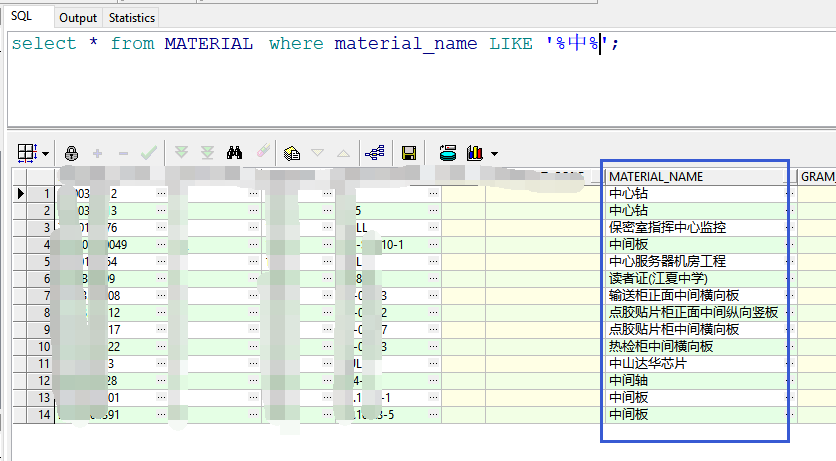
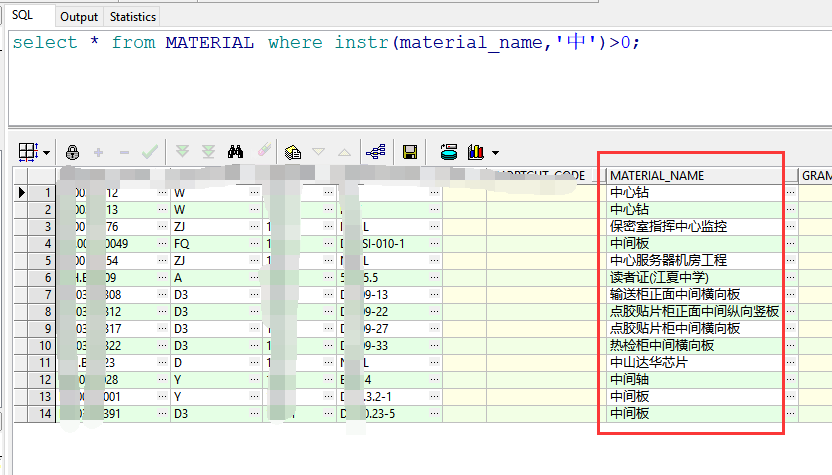
3、实例截图
1、

2、
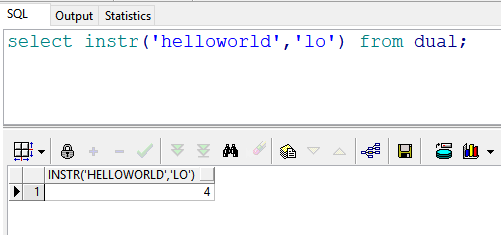
3、
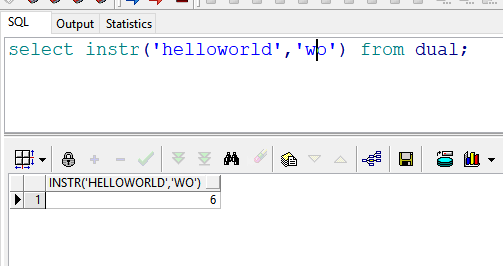
4、
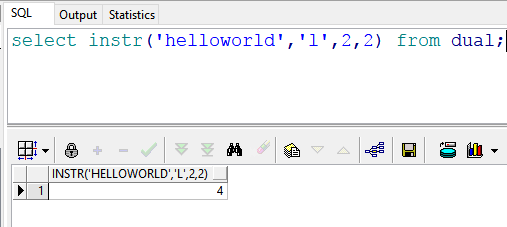
5、
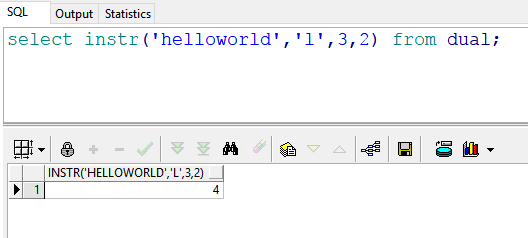
6、
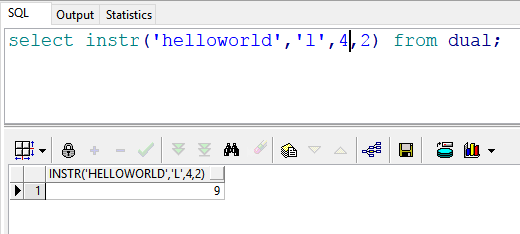
7、
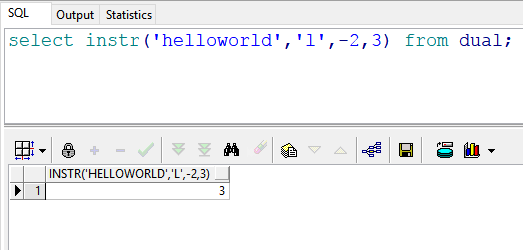
8、
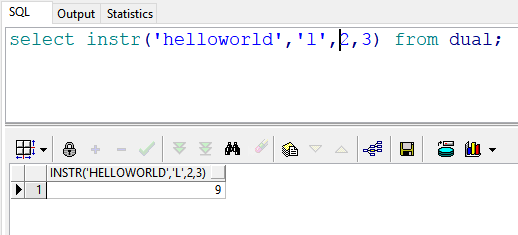
9、

原创作者:DSHORE 作者主页:http://www.cnblogs.com/dshore123/ 原文出自:http://www.cnblogs.com/dshore123/p/7813230.html 版权声明:欢迎转载,转载务必说明出处。(如果本文对您有帮助,可以点击一下右下角的 推荐,或评论,谢谢!) |
来自 https://www.cnblogs.com/dshore123/p/7813230.html
普通分类:

